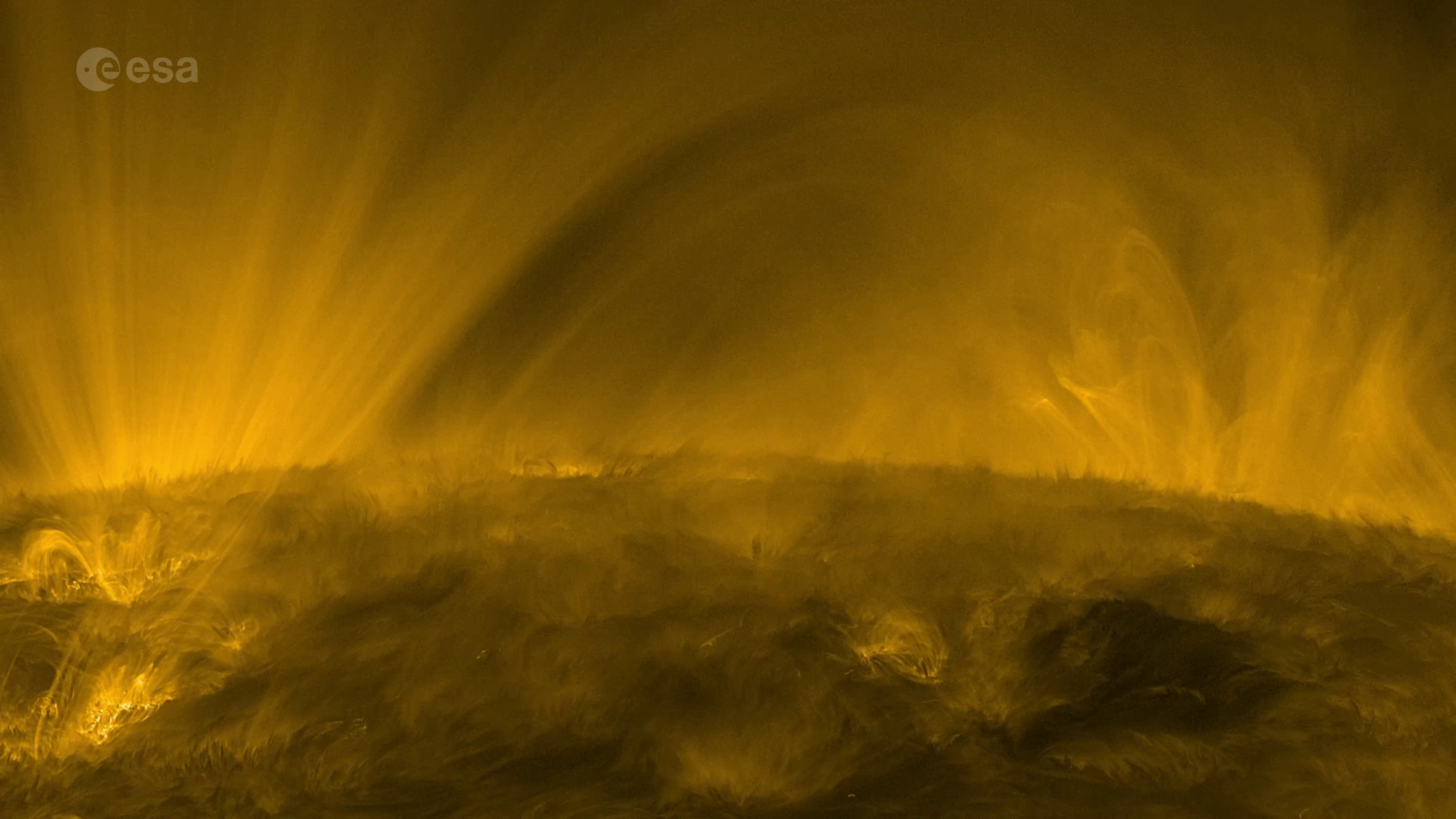(Click on the image to see the full video.)
This video was recorded on 27 September 2023 by the Extreme Ultraviolet Imager (EUI) instrument on Solar Orbiter. At the time, the spacecraft was at roughly a third of the Earth’s distance from the Sun, heading for a closest approach of 43 million km on 7 October.
This otherworldly, ever-changing landscape is what the Sun looks like up close. ESA's Solar Orbiter filmed the transition from the Sun's lower atmosphere to the much hotter outer corona. The hair-like structures are made of charged gas (plasma), following magnetic field lines emerging from the Sun's interior.
Spot the moss, spicules, eruption and rain
Lower left corner: An intriguing feature visible throughout this movie is the bright gas that makes delicate, lace-like patterns across the Sun. This is called coronal ‘moss’. It usually appears around the base of large coronal loops that are too hot or too tenuous to be seen with the chosen instrument settings.
On the solar horizon: Spires of gas, known as spicules, reach up from the Sun’s chromosphere. These can reach up to a height of 10 000 km.
Centre around 0:22: A small eruption in the centre of the field of view, with cooler material being lifted upwards before mostly falling back down. Don’t be fooled by the use of ‘small’ here: this eruption is bigger than Earth!
Centre-left around 0:30: ‘Cool’ coronal rain (probably less than 10 000 °C) looks dark against the bright background of large coronal loops (around one million degrees). The rain is made of higher-density clumps of plasma that fall back towards the Sun under the influence of gravity.
The full resolution movie with and without annotations can also be found on the ESA webpage.






